5.10: Area of a Parallelogram
- Page ID
- 4994
Use \(A=bh\) to find area.
A parallelogram is a quadrilateral whose opposite sides are parallel.
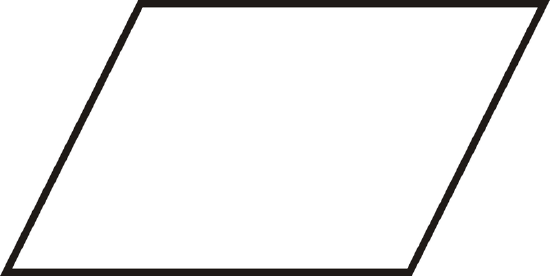
To find the area of a parallelogram, make it into a rectangle.

From this, we see that the area of a parallelogram is the same as the area of a rectangle. The area of a parallelogram is \(A=bh\). The height of a parallelogram is always perpendicular to the base. This means that the sides are not the height.
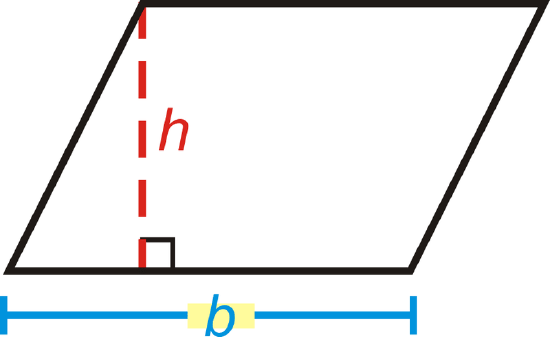
What if you were given a parallelogram and the size of its base and height? How could you find the amount of space the parallelogram takes up?
Example \(\PageIndex{1}\)
Find the area of the parallelogram.

Solution
Area is \(15(6)=90\text{ un}^2\).
Example \(\PageIndex{2}\)
Find the area of the parallelogram with a base of 10 m and a height of 12 m.
Solution
Area is 10(12)=120\text{ m}^2\).
Example \(\PageIndex{3}\)
Find the area of the parallelogram.
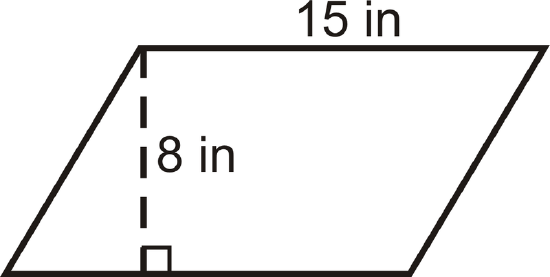
Solution
\(A=15\cdot 8=120 \text{ in}^2\)
Example \(\PageIndex{4}\)
If the area of a parallelogram is \(56 \text{ units }^2\) and the base is 4 units, what is the height?
Solution
Solve for the height in \(A=bh\).
\(56\text{ units }=4h\)
\(14 \text{ units }=h\)
Example \(\PageIndex{5}\)
If the height of a parallelogram is 12 m and the area is \(60 m^2\), how wide is the base?
Solution
Solve for the base in \(A=bh\).
\(60 \text{ units } =12b\)
\(5 \text{ units } =b\)
Review
- Find the area of a parallelogram with height of 20 m and base of 18 m.
- Find the area of a parallelogram with height of 12 m and base of 15 m.
- Find the area of a parallelogram with height of 40 m and base of 33 m.
- Find the area of a parallelogram with height of 32 m and base of 21 m.
- Find the area of a parallelogram with height of 25 m and base of 10 m.
Find the area of the parallelogram.
-
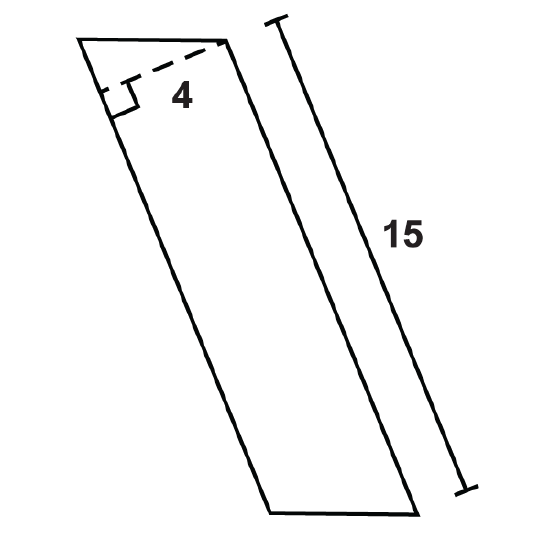
Figure \(\PageIndex{6}\) -
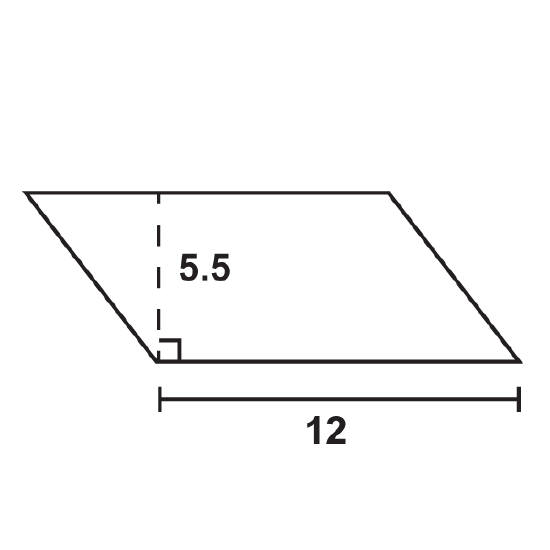
Figure \(\PageIndex{7}\) -
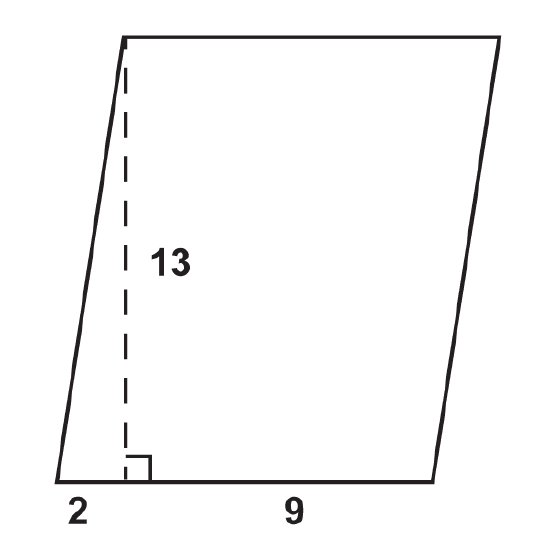
Figure \(\PageIndex{8}\) -
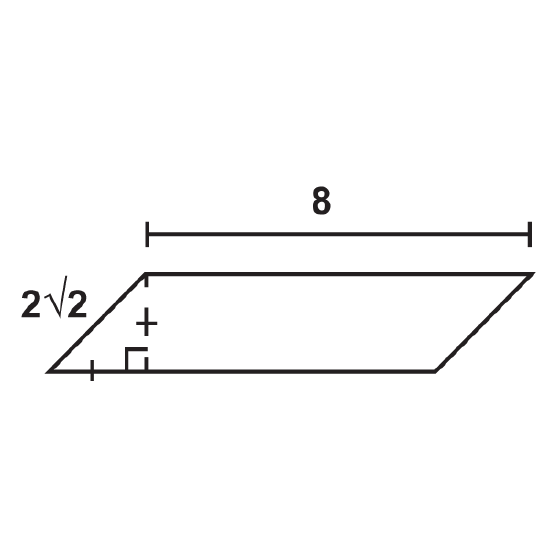
Figure \(\PageIndex{9}\) -
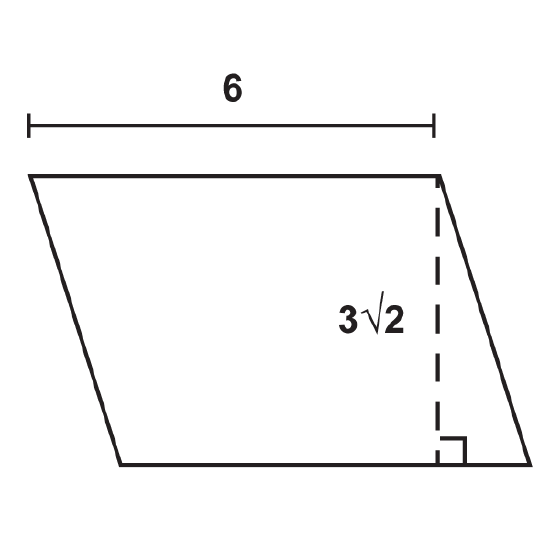
Figure \(\PageIndex{10}\) -
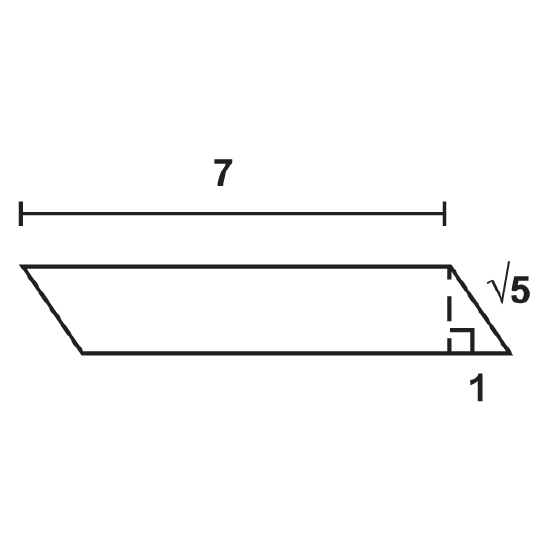
Figure \(\PageIndex{11}\) -
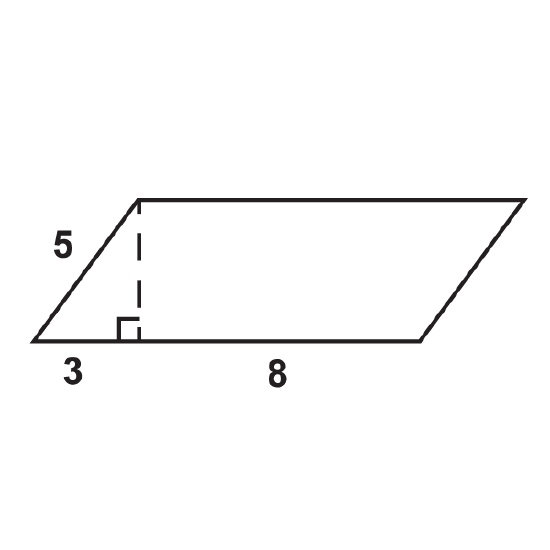
Figure \(\PageIndex{12}\) - If the area of a parallelogram is \(42\text{ units }^2\) and the base is \(6\text{ units }\), what is the height?
- If the area of a parallelogram is \(48\text{ units }^2\) and the height is \(6\text{ units }\), what is the base?
- If the base of a parallelogram is 9 units and the area is \(108\text{ units }^2\), what is the height?
- If the height of a parallelogram is 11 units and the area is \(27.5\text{ units }^2\), what is the base?
Vocabulary
| Term | Definition |
|---|---|
| area | The amount of space inside a figure. Area is measured in square units. |
| perimeter | The distance around a shape. The perimeter of any figure must have a unit of measurement attached to it. If no specific units are given (feet, inches, centimeters, etc), write units. |
| Parallelogram | A parallelogram is a quadrilateral with two pairs of parallel sides. |
| Area of a Parallelogram | The area of a parallelogram is equal to the base multiplied by the height: \(A = bh\). The height of a parallelogram is always perpendicular to the base (the sides are not the height). |
Additional Resources
Interactive Element
Video: Area of a Parallelogram (Whole Numbers)
Activities: Area of a Parallelogram Discussion Questions
Study Aids: Triangles and Quadrilaterals Study Guide
Practice: Area of a Parallelogram
Real World: Perimeter

